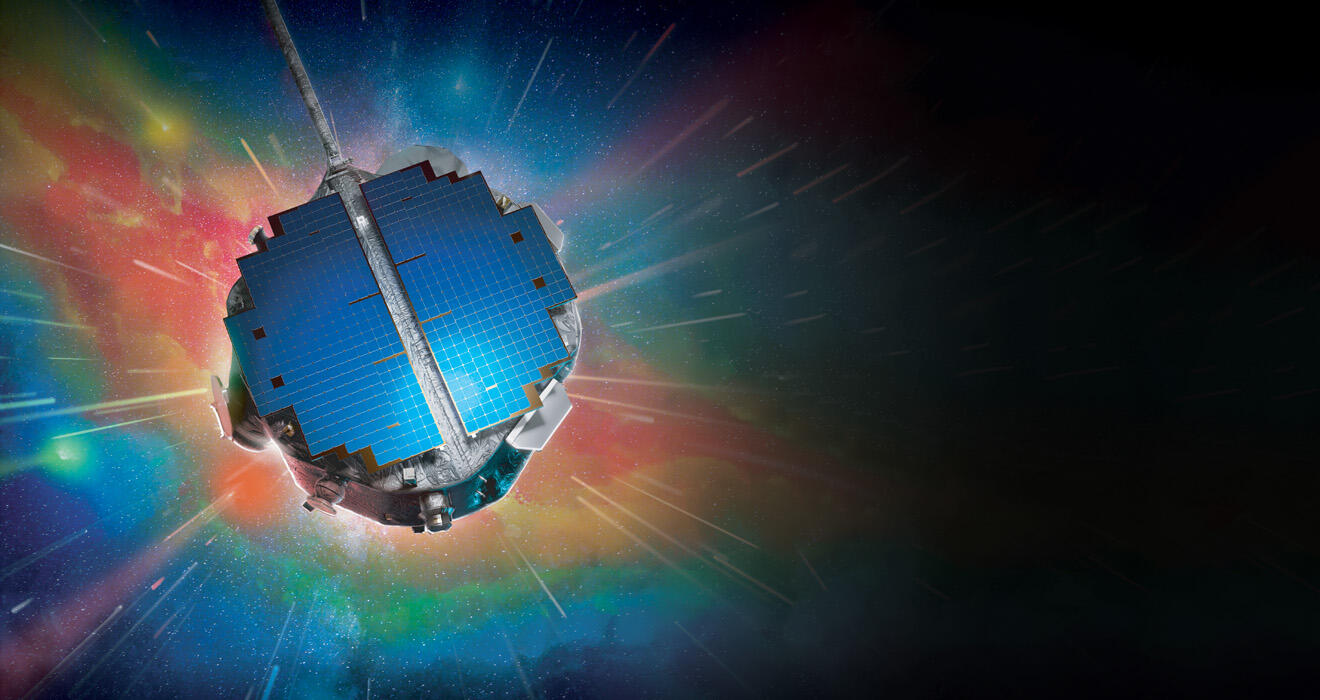
Princeton is a physics town. The University’s faculty and former students have won the Nobel Prize in physics more than two dozen times, and the nearby Institute for Advanced Study has seen many Einstein-level geniuses, including the man himself. In Princeton, the terms “black hole,” “wormhole,” and “quantum foam” were coined, all by University professor John Archibald Wheeler.
That’s some heavy-duty theoretical physics. But it’s not the kind of physics that David McComas does.
“As an experimental physicist, I go and measure things,” he says.
McComas, a professor in Princeton’s Department of Astrophysical Sciences, is leading a NASA mission to measure a really big thing — the heliosphere. It’s the bubble of particles and magnetic fields generated by the sun. The heliosphere extends far beyond the orbits of the planets and largely shields our solar system from high-energy particles known as galactic cosmic rays. No one knows precisely how big the heliosphere is, its shape, or how it interacts with the local interstellar medium.
McComas is the principal investigator — he compares it to being the CEO — of NASA’s Interstellar Mapping and Acceleration Probe (IMAP). It’s a big NASA mission, costing upward of $780 million. As of early October, IMAP was speeding toward a gravitationally stable solar orbit roughly a million miles from us. That’s far enough to get away from Earth’s magnetic field but close enough to be a sentinel, on alert for solar storms that can cause trouble for our satellites and power grid. IMAP launched Sept. 24 on a SpaceX Falcon 9 rocket, soaring into the early morning sky from the Kennedy Space Center on Cape Canaveral.
On most days, McComas can be found at Princeton’s Space Physics laboratory. It’s at 171 Broadmead, so far on the easternmost edge of campus as to be a good chunk of the way to Rutgers. You find it by going past the football stadium, past a ballfield, past another ballfield, across Fitzrandolph Road, and through a parking lot, until you reach a brick structure — a former day care center — with a small sign: Princeton Space Physics.
The place buzzes with energy on an August morning when I first meet McComas. Launch is nearing. McComas’ excitement is palpable.
“This is the culmination of so many years of work and collaboration. And competition. One hundred and eighty white papers,” he says.
McComas is, at age 67, an imposing man, several inches over 6 feet, solidly built. (“I learned very early when I talked to people not to tower over them,” he says.) He has the demeanor of a busy man with a long checklist in his head, a lot of go/no-go decisions. This is not a person whose time a visitor is eager to waste. My questions tend to bounce around, scattershot, digressive, but he keeps track of all of them — another checklist — and loops back to earlier ones to tie up loose ends.
The Space Physics building has a warren of offices on the main floor, a common space with a projector available for presentations during the regular Friday lunch discussions among the postdocs, and a classroom upstairs. The laboratory is in the basement. To enter, you must gown up and put booties over your shoes. It’s sectioned off in a series of “clean rooms” with increasingly rigorous requirements for preventing contamination. If you go all the way to the inner chamber, you will need to be covered head to toe in what is called a bunny suit.
The lab is noisy. A vacuum chamber is pumping away, and there’s a regular burping noise from a nitrogen generator. Dominating the laboratory is an enigmatic contraption, a tangle of pipes, chambers, and gauges. McComas explains that this thing — the “ion and neutral beamline and test and calibration facility” — generates a variety of particles, such as ions and neutral atoms, and shoots them down a tube into a vacuum chamber. Researchers can place up to two instruments at a time inside the chamber to calibrate and test how they will perform in space.
McComas says he led the remodeling of facilities like this at Los Alamos National Laboratory, where he worked for two decades, and then at the Southwest Research Institute in San Antonio. When he came to Princeton nine years ago, he and his colleagues had to build their own facility from scratch.
The laboratory also has ordinary tools, the things everyone has at home, such as a cabinet of wrenches.
“Most of the students come here and they don’t really have much practical skill. So a lot of what we do in the lab class is getting them using their hands and actually building stuff,” he says. “They’ve done everything on their computer.”
It was in this basement that the space physics team built an instrument for IMAP. It wasn’t a model to be replicated in some NASA space center. It was the actual flight hardware to send into outer space. The instrument is called SWAPI, for Solar Wind and Pickup Ions.
The instrument lead of SWAPI is McComas’ colleague Jamie Rankin, a research scholar and lecturer at Princeton and IMAP co-investigator. She’s also the deputy project scientist of NASA’s Voyager mission. (When I tell Nicky Fox, NASA’s associate administrator for science — the leader of all NASA science missions — that I have talked to McComas, she responds, “Have you talked to Jamie Rankin? She’s a rising star.”)
For the past four years, McComas and Rankin have taught the Space Physics Laboratory course (Astrophysics 250 and 251). Rankin, 37, is teaching it this year while McComas takes a sabbatical to focus on IMAP. Rankin has 14 undergraduates this fall. Some of her students are part of the Princeton rocketry club, and some are majoring in mechanical aerospace engineering. I ask if there are any English majors. “I would love if there was an English major,” she says.
Rankin is a polymath: She has undergraduate degrees from the University of Utah in both physics and music composition.
“Part of composing music is learning all the notes … and then putting them together and making them my own,” she says. “There’s a lot of analogies to putting together a space mission.”
There is a passing of the (acetylene?) torch going on here at Princeton Space Physics.
“I’m extremely happy doing what I’m doing. I love teaching. I love doing original research,” McComas says. But he adds, “This is the last instrument, or mission, I’m ever going to lead … . I think you’ve got to turn over the leadership to the next generation, and you’ve got to help them be successful.”
In late August, I see McComas a second time, at a NASA news media briefing in a conference room at Astrotech, a spaceship-processing facility in Titusville, Florida, just across the Indian River from Kennedy Space Center. IMAP is in a clean room in the building next door.
McComas has an unusual origin story for a professor of astrophysics.
“Most professors …” I say.
He finishes my sentence. “… they’re probably pretty good readers.”
McComas says he is severely dyslexic. Growing up in Milwaukee, he didn’t begin to read until fourth grade and struggled to get decent grades in high school.
“When I was growing up, I didn’t know the word ‘dyslexia.’ What it was called when I was young was ‘slow,’” he said in a speech at a dyslexia conference in 2014.
But being dyslexic is central, he says, to his remarkable career. From an early age, he understood the physical world. He was the prototypical boy who takes apart a radio and puts it back together.
“I’ve got extremely good three-dimensional physical understanding. I can unfold a maze in my brain. I can travel a path and go back years later and it’s still there,” he says.
His father believed that his kids should get jobs making money before going off to the rarefied world of college. McComas decided to make jewelry and sell it. To be a jeweler requires mechanical skills, including the ability to solder. McComas would solder gems onto settings and then sell his wares at state fairs.
“Jewelry is just three-dimensional assembly of stuff,” he says.
He considered skipping college because he was making good money. But he applied to MIT, which found this enterprising young man appealing even if he didn’t have superior grades. Off to Cambridge he went. One day he saw a notice that the physics department was looking to hire a student who knew how to solder and weld. That sent him forth on a career as a physicist, including a doctorate from UCLA.
“Dyslexia got me to MIT and made me a scientist,” he says.
After stints at Los Alamos and the Southwest Research Institute, he came to Princeton in 2016 as vice president overseeing the Princeton Plasma Physics Laboratory and a professor of astrophysical sciences. By then he was already the principal investigator of a small NASA spacecraft, a precursor to IMAP, called IBEX (Interstellar Boundary Explorer), which launched in 2008. When he came to Princeton, he’d already put together a multi-institutional science team for a potential NASA mission to follow up IBEX. McComas got a verbal agreement from Princeton that, if selected to lead the new mission, he’d get the support he needed, including space for a lab and resources to outfit it. NASA officials evaluated competing proposals for a heliophysics mission and chose McComas’ idea for IMAP. That opened a pipeline of government contract money, on the order of $107 million, flowing to Princeton, McComas says.
He left the vice president position last year, feeling he couldn’t do justice to that role and simultaneously focus on IMAP’s launch. This year, he is on a sabbatical and will spend much of his time at the University of Colorado in Boulder in a laboratory where the instruments are controlled and the data is processed.
The heliosphere is a part of our environment most of us never think about. As it says on a Princeton website, the instruments on the one-ton spacecraft will address “fundamental science questions about the nature of space.”
Space has a nature! It’s not empty. It’s not just a dimension. It’s full of particles and fields and things interacting with each other. Space has weather.
This is not something intuitive as you look at the night sky. In fact, it was only a little more than a century ago that scientists studying comets realized that one of their tails always points away from the sun. That was the telltale sign of the solar wind.
The sun is a fusion reactor, roughly 865,000 miles in diameter. It emits particles that race across the solar system. The solar wind is supplemented by dramatic, explosive events called coronal mass ejections. These events send superheated gas, or plasma, into space, and can cause geomagnetic storms, generating spectacular auroras and sometimes damaging satellites and the electrical grid.
Half of the 10 instruments on IMAP will study the solar wind and provide receiving stations on Earth with real-time information about what’s blasting our way. The other half of the instruments will gather data about the interaction of the heliosphere with interstellar space, and will help map the heliosheath, the outer boundary of the sun’s magnetic field and the solar wind.
IMAP is a team effort, one that has involved thousands of people, with major contributions from 81 institutions in 35 states and six nations. The Johns Hopkins University Applied Physics Laboratory built the spacecraft. Still, the person who got things rolling was McComas.
“IMAP is huge. Ten feet across, 4 feet high. A metric ton,” McComas says. Whereas IBEX had just two instruments and weighed only a couple hundred pounds. “I could have picked it up.”
What is it that McComas most wants to know about the heliosphere?
“Everything. What’s it made of? What’s its density? What’s its composition?”
He goes to a whiteboard to sketch cartoons of the heliosphere and the things lurking out there in deep space. He uses an orange magic marker to draw a graphic of two interstellar clouds.
“This part here, we’re talking about the collision of two interstellar clouds, and the region that might form there, and what that might look like,” he says. “We think our position is close to the collision point of two clouds in the interstellar medium.”
Meanwhile, there’s another collision going on: Between NASA space science and President Donald Trump. As the Trump administration has been deconstructing and reprioritizing the entire federal bureaucracy, it has thrown science agencies, including NASA, into turmoil.
NASA has long enjoyed bipartisan support and typically floated above the most feverish partisan battles in Washington. But it got a shock when Trump’s fiscal year 2026 budget request to Congress called for cutting the NASA science budget nearly in half. That is not a reform or a recalibration or a restructuring, but a dynamiting. According to the Planetary Society, a nonprofit space science advocacy group, the cuts would terminate 41 NASA missions.
Astrophysics would see its budget cut by two-thirds, and the Earth science budget halved. The administration wants to cut about one-quarter of the overall NASA budget but preserve missions devoted to human spaceflight, national security, and planetary defense.
Into this politically perilous atmosphere sailed IMAP. And it survived. IMAP is fully funded, according to Fox, NASA’s top science administrator. IMAP’s role as a space weather monitor gives it the virtue of contributing to national security.
I ask McComas whether mapping the heliosphere is so far removed from our daily existence as to be a matter of scientific curiosity, but not something that’s going to, say, change the price of eggs. McComas says it’s not just the space weather monitoring by IMAP that makes it a pragmatic instrument. Knowing more about the heliosphere may also be useful in the long run.
That’s because the heliosphere is not static. It expands and contracts. It is generated by the sun, and the sun is a variable star — we’re on the declining phase currently of the 11-year solar cycle. And interstellar space — the realms through which the heliosphere is roaming — is not a uniform medium. There are huge clouds of dust and gas out there. Some are dense, which is where things get really interesting.
The heliosphere conceivably can run into a dense region of gas and dust and become dramatically compressed. The “nose” of the heliosphere can be pushed back toward Earth. In theory, it could be compressed so much that Mars or even Earth is outside the heliosheath, exposed to the local interstellar medium and bombarded by cosmic rays. Scientists debate whether there is evidence this has happened at some point in Earth’s history.
Matina Gkioulidou, the IMAP project scientist at the Johns Hopkins University Applied Physics Laboratory, says, “Imagine if you have a star that doesn’t have a protective bubble, and you have all these cosmic rays coming at you. Would you be able to form life there? We don’t know.”
McComas says this is relevant to NASA’s human spaceflight ambitions, including missions to Mars.
“There are these really strong galactic cosmic rays that are flying in from all directions in space, and most of them come in and get sort of diverted by this heliosheath region, by the solar wind and magnetic field … . If it weren’t for that interaction with the heliosheath, it would be 10 times worse, and you probably wouldn’t be able to send astronauts there.”
IBEX and IMAP employ a new type of astronomy based on “energetic neutral atoms,” or ENAs. The solar wind carries charged particles toward the distant edges of the solar system. These charged particles are in the thrall of the sun’s massive magnetic field. But when they approach interstellar space — and begin interacting with the particles out there — some of them gain, or exchange, electrons and become neutral. When that happens — behold — they no longer are affected by the sun’s magnetic field and can wander. Some of them, in fact, wander toward Earth. IMAP’s instruments can detect these ENAs and analyze them.
Who invented this kind of astronomy?
“More or less we did,” McComas says.
“The trick about the heliosphere is you don’t see it in light. You have to see it in these energetic neutral atoms. So we had to develop an entirely new field, which we did with IBEX, which we call energetic neutral astronomy.”
At the Cape for the prelaunch press conferences, McComas says he’s “excited, but tired.”
He’s seen about 20 launches over the years, but it’s especially nerve-wracking when it’s your own project.
“Humanity has spent all this time and energy building something truly unique and special, and it’s leaving the Earth and it’s never coming back,” he says. “If it’s yours, you are holding your breath.”
I ask McComas to explain exactly how, after IMAP snags one of these energetic neutral atoms, it squeezes information out of it. How can the instruments interrogate the atom? How can scientists then craft a map of the heliosphere, including that boundary region billions of miles away?
“It took us a long time to figure this out too,” McComas answers. “Because we measure the energies of these particles coming back in, it’s a little bit like having multi-spectral pictures. It’s not just regular light, there’s ultraviolet and X-rays … . It’s sort of like you sent waves out and they bounced off something and they come back.”
Space has stories to tell. The language is not textual, it’s more visual or even auditory. This is the music of the spheres, awaiting the innovations that can hear it.
McComas is part of the go/no-go leadership decision team on the morning of the launch. It’s a gorgeous morning, the launch window just after dawn, perfect for visuals. The Falcon 9 lifts off at 7:30 a.m. as McComas, members of his family, Rankin, and other members of the Princeton entourage watch from a balcony of a building a few miles from the pad.
Once IMAP is safely in a parking orbit, and prior to being dispatched toward its permanent position a million miles away, McComas makes a brief appearance on NASA TV. “The heliosphere is our home in the galaxy. It’s really important. We couldn’t live without it,” he says, keeping it simple.
Two days after launch, I talk briefly by phone with McComas, who is still in Florida. Things are happening fast, he says in his busy-man voice. He says they need to tweak the trajectory of IMAP, but only slightly. The launch and the final deployment from orbit went so well that they wouldn’t need to expend much fuel to get the spacecraft on the right trajectory.
How are you, I ask.
“I’m good because IMAP is good,” he says.
Joel Achenbach ’82 is a freelance writer. He retired this year after 35 years as a staff writer for The Washington Post.


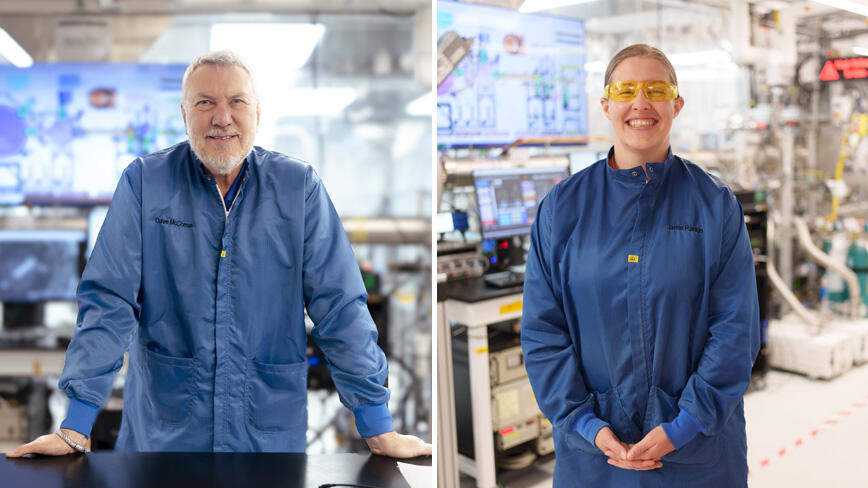
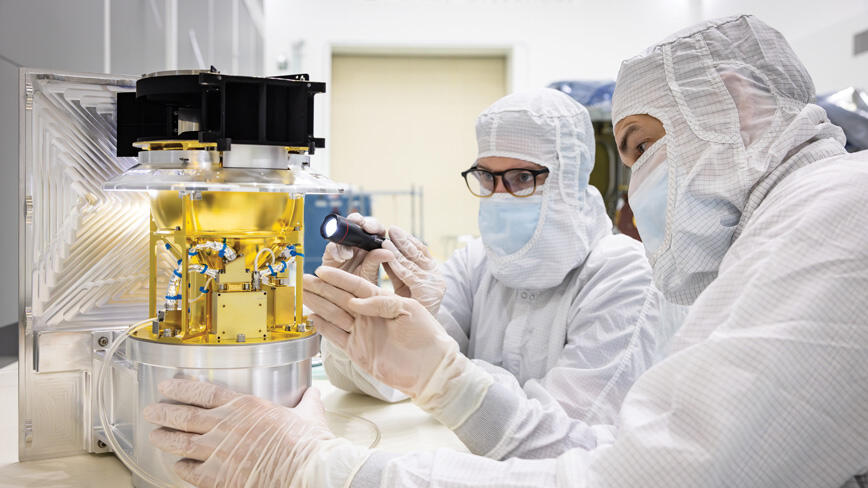
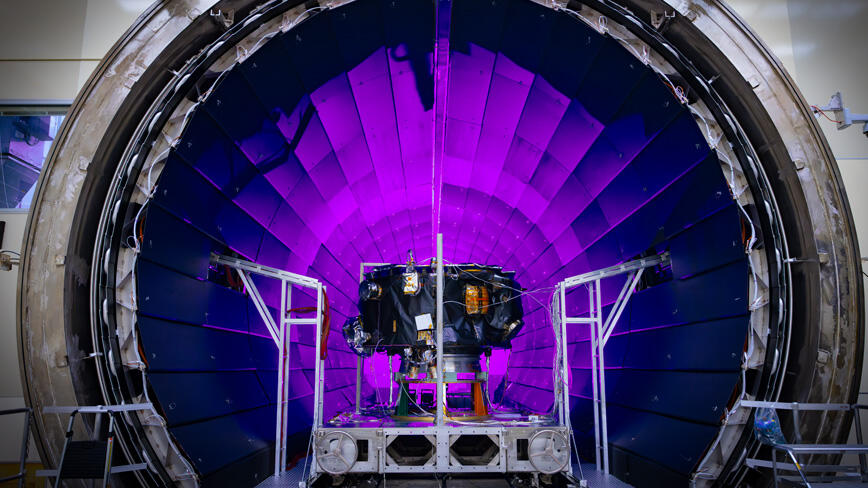
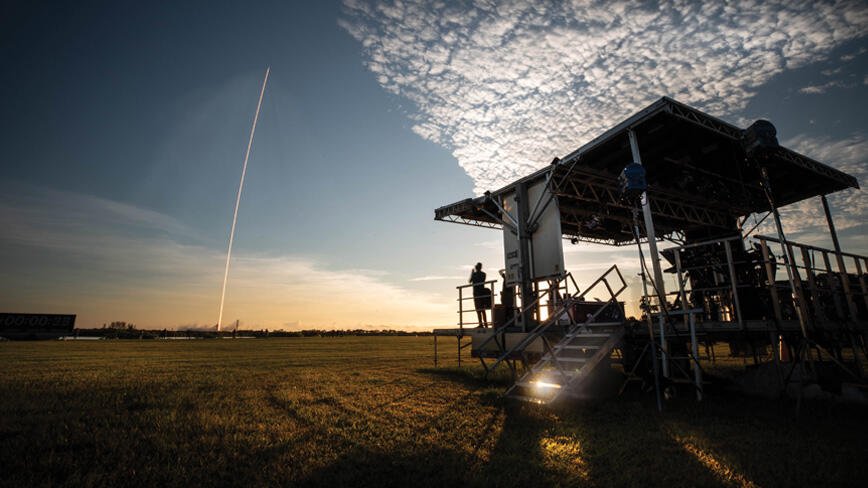




No responses yet